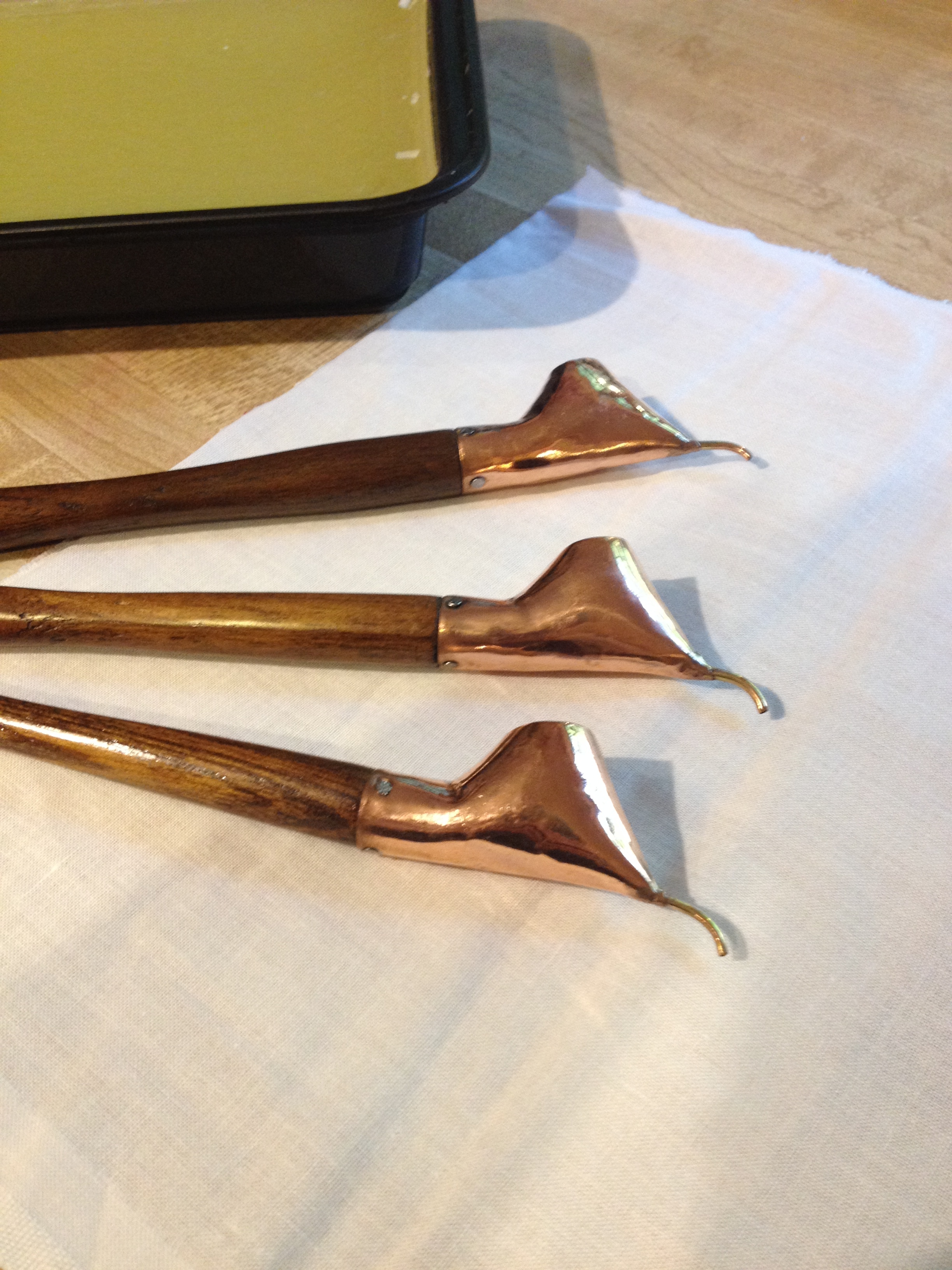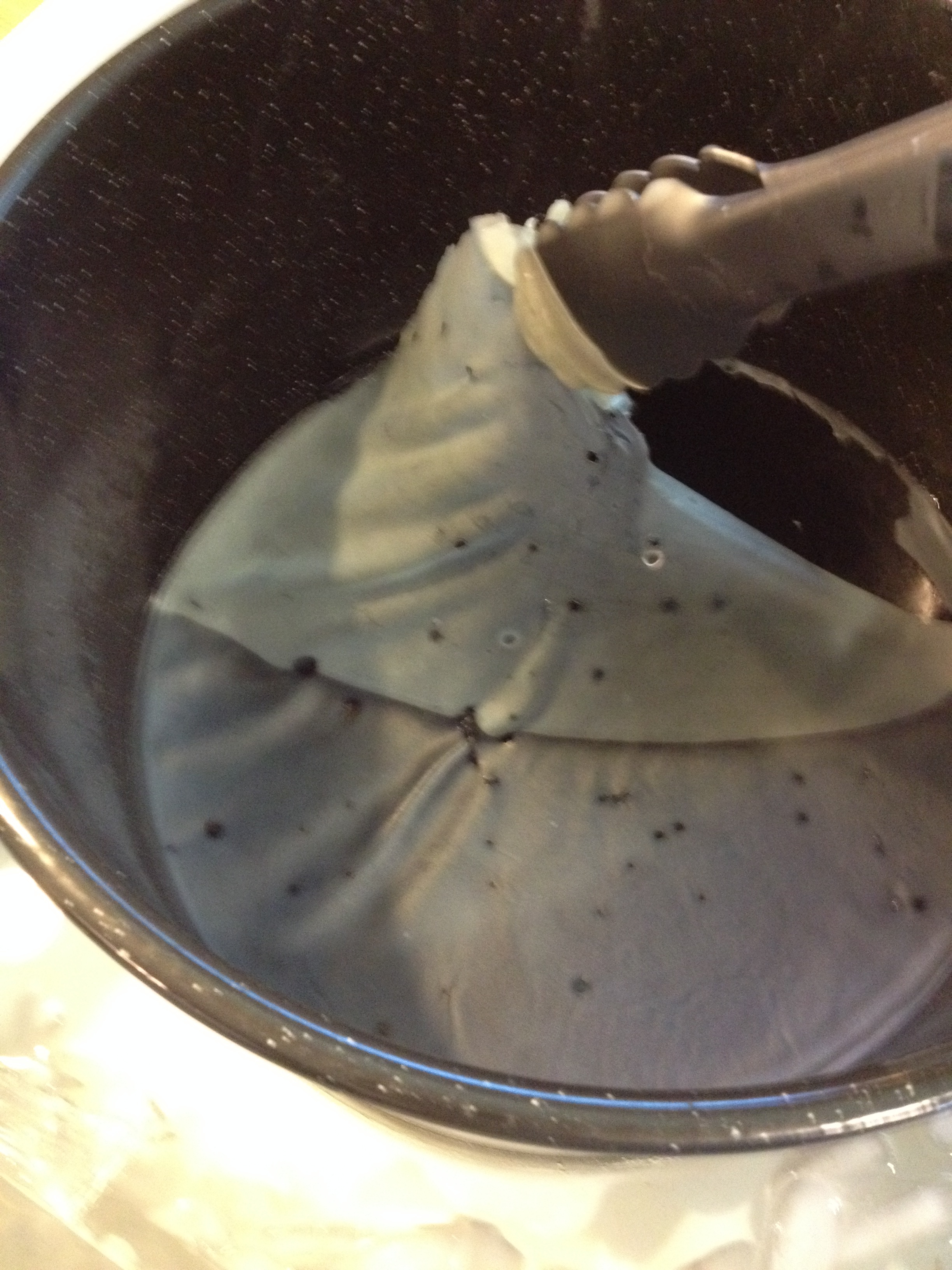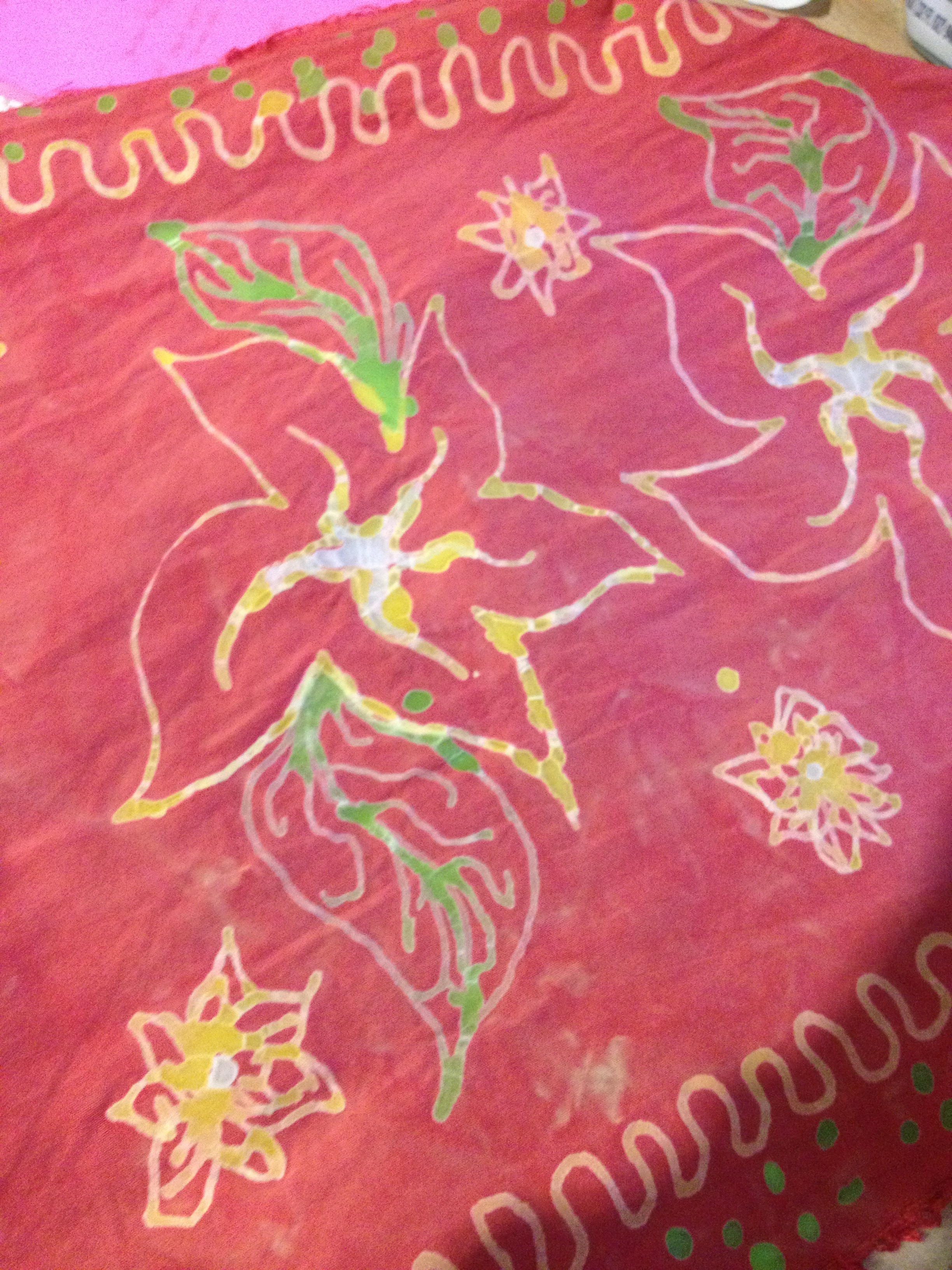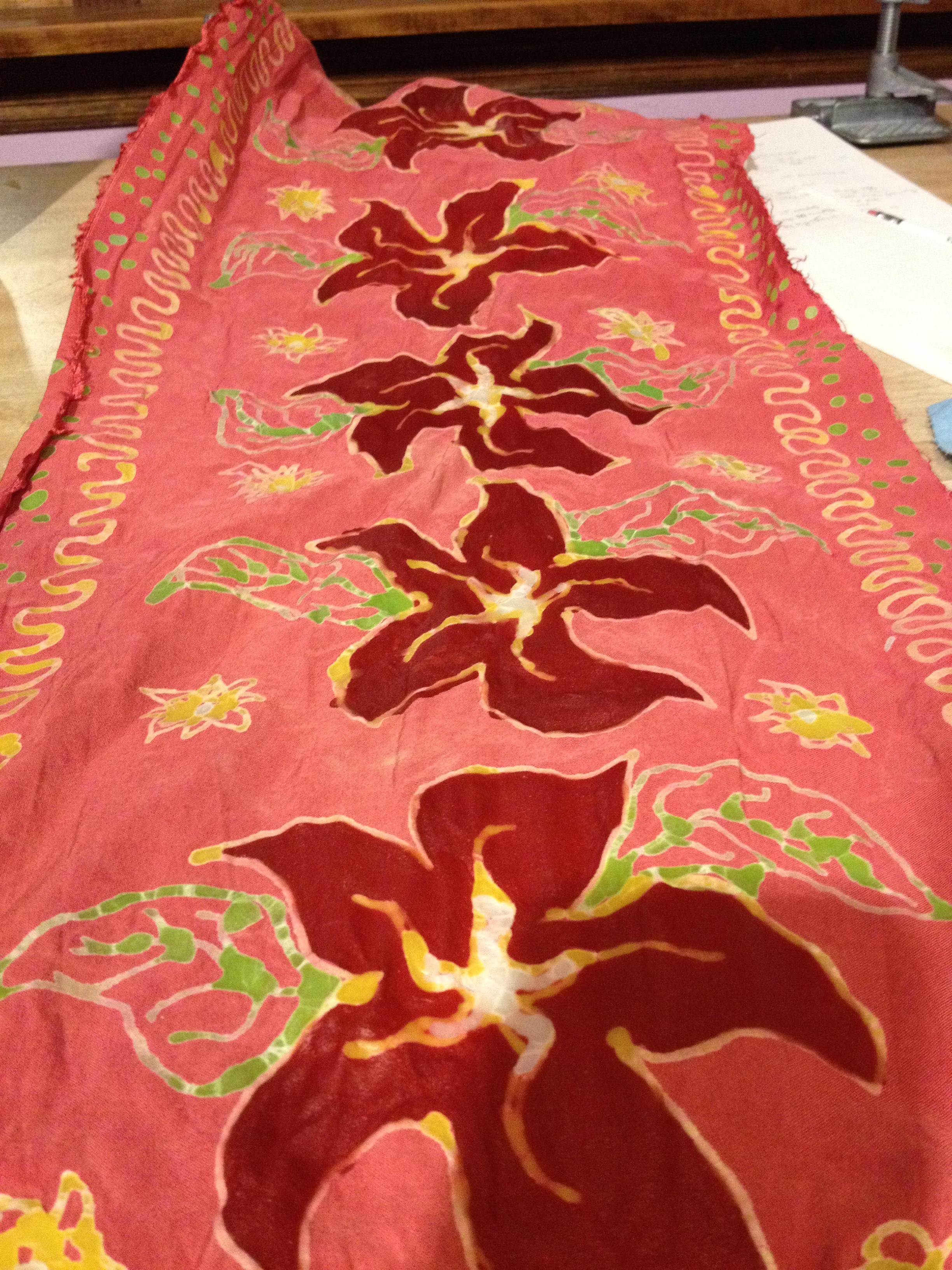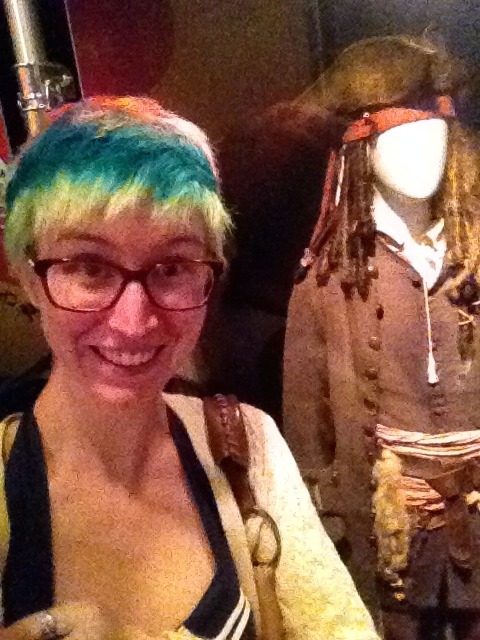Two parts retro and one part refashion - this week, I've turned a vintage sheet I found at a secondhand market into a cute sundress with a dip-dyed skirt.
Read MoreThe Floral Bra Strikes Again
In which a pattern is made with different fabric, and a comparison is made.
Read MoreThe Floral Satin Bustier
Basically, I've conquered the world in the form of a floral satin bustier, and I'm thrilled to bits.
Read MoreShirt Tails and Distractions
We continue our adventure via a plan which was not the one we started with.
Read MoreWax on, Wax off
Questionable Karate Kid reference aside- one of my favorite parts of this new-found freedom I seemed to have developed (read: I had never realized how much creative energy school sucked out of me....) is the opportunity for new projects! Batiking, for those of you yet unaware, is a traditional Indonesian technique for creating colorful patterns on fabric using wax as a resist, and multiple layers of dye.I'd always wanted to try it, but hot wax kind of scares me a tiny bit, and I could never really think of a project I wanted to do badly enough to bother with buying all the supplies. However, once I came up with a project, I did a bit of research and it turns out the tools you need aren't all that expensive!
I've so far spent two weekends batiking- It's kind of an all day affair because of the waiting time while fabric is dyeing, and then drying. I set myself up a nice little workstation (on my handy-dandy-all-purpose-worktable-that-is-mostly-for-screen-printing) and put on some tunes:
The Supplies:
Test Fabric (I used some scraps of muslin I keep on hand for days like this)
Dye (Fiber Reactive dye. You can't use acid dye because the heat needed for that chemical process would melt the wax. sigh.)
Fabric (for your actual project! Stick to cellulose based fibers like cotton or rayon- not too delicate, and not too tightly woven, or the wax won't penetrate.)
Batiking Wax (a blend of paraffin and beeswax. It's available premixed, or you can buy them separately and mix them yourself!)
A wax melting pot (Not for food! choose one that's as small as you can find, but deep.)
An electric burner (for obvious, wax-melting purposes. With a fairly accurate adjustment knob)
A clip-on thermometer (of the non-digital variety)
Tjantings (the copper tools for drawing wax onto your fabric)
Large wax pot (Not for food! Your project must be able to swim freely in this pot)
Wax tongs (Also not for food!)
There! That's a start. We'll get to the why's of some of those specifications momentarily. None of it's very expensive- the most expensive item was the electric burner, which I found on amazon for $17, and which I can totally use for other things. It's handy. Even the Tjantings are hardly a budget breaker. I bought all my supplies at dharma which I love and would be nowhere without. Also, if you have questions about anything fabric-related, the nice people at Dharma will probably know the answers.
Here's a closeup of the tjantings- I bought three different sizes- the holes in their spouts are different sizes so the molten wax will come out at different speeds, allowing for thicker and thinner lines. That said, I definitely used the thinnest one about 95% of the time, after I played with the three to get a feel for them. The largest one deposited so much wax so quickly that it dripped through the fabric straight down onto my hands, which was fairly unpleasant. Wax at this temperature will probably hurt a bit if it drips on you, but it shouldn't burn or blister. It's about the same as a low-temp hot glue gun. I'm a bit more sensitive to temperature extremes than most people, so I was careful. That one's best used for thicker fabric, I suppose.
Don't stick your fingers in the wax pot. Did your mother teach you nothing as a child?
Wax On:
As to how one physically goes about the task, there are a few ways to do it. A lot of tutorials I found have you pin the fabric so that it's suspended above your workspace, but if you look at most videos of batiking on YouTube, they'll just be holding the fabric in their hands, suspended using their fingertips underneath and drawing lightly from the top with the Tjanting. Tjaps (the copper stamps used to make repeating and intricate patterns for batiking) are a different story that I'm not talking about because Tjaps really are out of my price range. By a lot. Which is unfortunate given how beautiful they are.
When starting to draw in each color, or when switching tools, hold the Tjanting's head submerged in the wax for a few minutes so that the copper can heat up; your wax will flow more easily that way, and you'll be able to draw for longer without a refill. Anyways- this is how I ended up holding my Tjanting- you, should you choose to batik as well- should obviously play around with it and decide what works for you. Especially if you're a leftie.
The wax burns at 245 degrees (Farenheit!)- and the internet tells me that it erupts violently in flames and is very difficult to put out once it ignites. This is why you need a thermometer and a burner with a fairly accurate adjustment knob. You need your wax to be around 23o in order to be hot enough to flow easily, but don't let it get above 240! Also, don't put water on a wax fire- use baking soda to extinguish infernos.
Now that we've gotten through the setup, the rest of it is pretty straightforward. Draw on your white fabric, with the wax, in whatever areas you would like to be white. Then, pop that sucker into a dye solution (cold water only, or you'll melt the wax!) If you're using a soda ash solution, which you should be if you're using fiber reactive dyes, you'll want to make sure to take your fabric out after no more than 30 minutes, because the soda ash has a nasty habit of eating away at the wax.
Rinse (literally) and repeat: Draw more wax in the areas you want to remain that color, dye, rinse, draw... you get the picture.... The most awful part of the process is waiting while the fabric is in the dye bath, and waiting for it to air dry once it's out (Can't put waxy fabric into mom's dryer. Would probably be disowned...or yelled at...)
In the above photo, you can kind of see the cracking in the waxed areas where the darker colors are coming through. That's because of the wax mixture. Beeswax is very flexible at room temperature, but it gets gummy really quickly on its own. Parrafin wax is very flaky, and also doesn't adhere well alone. The combination of the two produces the crackling, while still keeping the wax adhered. People who do this a lot make their own mixtures with more of one or the other, depending on how much or little crackling they wish to occur. I happen to really like it just how it is, so I'll keep on keepin' on with my 50-50 blend.
Eventually, you'll either fill up your fabric with wax or run out of darker colors to dye your fabric. If you haven't already, you're probably wondering how to get all that wax out of there.
Wax Off:
This is why I said not to choose anything delicate. The definition of that, in this case, is don't choose anything that wouldn't like to be boiled- because that's how you get the wax out. I found my pot at goodwill for $4.50- it's a canning pot, and will be just large enough for my dress when it's time to make that.
This is a pretty fun part of the process- you fill the pot with enough water that your fabric is completely submerged (the more wiggle room the better), and boil the living daylights out of it. I don't mean just bring that pot to boiling and then shut the stove off, you have to boil it and agitate it while you're boiling it for a good 10 or 15 minutes, so that all the fabric that is caught in the folds of the fabric is dislodged and melted. Then, take your pot off the heat, and use your tongs to carefully drop some stones into the pot. These will weight down the fabric so it doesn't float up and touch the wax layer while it's cooling. I used some smooth river rocks that I stole from the garden in our front yard. If you get rocks from outside, give them a good scrubbing first, your fabric will thank you. You could also use any other object as a weight, as long as it's heavy and rust-proof.
The wax will cool in a skin on the top of the water (Science!) and the fabric will remain safe and wax-free underneath. Now, you have to wait for the pot to cool entirely....
Impatiences sparks ingenuity- I didn't want to wait for it so I filled the sink with cold water and ice cubes so that the water inside the pot would cool faster. After you're sure it's completely cool (this next part won't work if it's not) it' time to remove the wax. Take your wax-only tongs, and pinch the wax at one side of the pot, pulling up and around slowly. This bit reminded me of peeling Elmer's glue off my fingers- it comes off like a layer of skin. there may be some pieces stuck in a ring around the pot, but that's okay, The water is cool so the wax can touch the fabric without anything bad happening.
Put the wax on a paper towel to dry- the great thing about Batiking is that there's very little waste! After you're sure there are no more water droplets adhering to your wax, you can drop it back into your small wax pot and use it again! Then, get your stones out of the bottom of the pot so they don't scratch it, pour the fabric out, and give it a good washing. If you can still see spots of wax, you didn't boil it for long enough. and Voila! your batik project is complete!
After the test swatches, I made a head scarf using some of the rayon fabric I'm eventually going to make my dress out of, so that I could make sure it handled the dye adequately.
It dyed a little lighter than I was anticipating, and it seems like a lot of batikers have this problem. If you want to get dark colors, especially after multiple previous layers of dye have gone into the fabric, try some of Dharma's after-soak. Basically, it sets some of the dye that's still bonded to the water in your dye bath to the fabric,and you end up with richer, darker shades without having to soak for longer and risk having your soda ash dissolve the wax.
After the batiking was done, all I had to do was hemstitch the edges and I had a brand new handmade headscarf! I'm so looking forward to this dress....
There are a lot of applications for wax-resist color techniques- I sort of thought the most popular was batiking but that idea bubble was popped as soon as I started telling my friends what my plans were that weekend: "I'm Batiking!"... "You're what?"... "Batiking!"... "That's not a real word. You made that word up. What is that?"
Indonesia uses wax resist for batiking, the Ukraine uses it to make multicolored and beautiful eggs called Pysanki- something we used to do around Easter every year as a family before we ran away to college. China uses something called Guetta in place of wax to draw on silk, because part of the silk dyeing process involves very hot water (wax is no good melted!) There are some countries in Africa that do something very similar to batiking, but with different designs and usually earth tone colors.
This project was an incredibly good time, and I'm excited about more like it in the future. As far as I'm concerned, it doesn't particularly matter what I'm doing but I'm happiest if I can learn something from it.
The first dress of 2014, and its first day out on the town.
So, here's the thing. When you're a student, you spend most of your time either in a classroom or doing homework. Sometimes all of your time. Sometimes so much time that there's none left to spend on sleeping. Or eating. Or friends. When you're working, it's the same although I've been lucky so far to not have the kind of work that comes home with me, past the occasional entertaining story at the dinner table. When you're travelling, there's no time for crafty business but it's alright because SELFIES! Sorry..It's alright because you're enriching your knowledge of culture and diversity and taking pictures of all of the exciting things (ahem)... There's not a lot of time for craftiness, unless you make it.
Usually.
Unless you're in a holding pattern between Job A, Job B, and more travelling- in which case, you attempt to make up for all the crafting time lost!
I made this dress last month- in October- and it was the first dress I'd made yet this year, which is tragic. I have since nearly finished one more and have plans and fabric for a third, but that number is still much too low for something on my list of favorite things to do.
I found this fabric without really looking at Joanns, and brought home enough to make 'some kind of dress'... Sometimes there's a plan, most times there's not.
I drafted the lace-up bodice pattern myself, and then just kind of made up the skirt part as I went. The fact that this pattern only exists in my head, though, doesn't mean it can't be learned from.
Materials
- 3 yards Brown Floral Fabric (100% Cotton)
- 1/2 yard Contrasting Grey Floral Fabric (also 100% Cotton)
- 12 ft. of Grey Paracord
- 10 Spacer beads (for lacing)
- Contrasting silk thread for topstitching
- Zipper (I eventually replaced mine with a metal one, after my invisible zip ended up having a flaw)
- Lining fabric (I used some undyed muslin from the stash because I'm thrifty like that)
Having a bias tape maker was also helpful, since there's a lot of that in this dress. Also the usual sewing machine, needles appropriate for the job, etc.
After making a mockup out of cheap woven fabric I keep around for precisely that job, and making sure it fit how I wanted it to, I started working on the bodice. I consists of 7 panels- center front with princess seams, then side front, side back, and center back. The center back piece supports the lacing. I had originally planned for the zipper to be at the center back, but that kind of went out the window when I decided there needed to be bias tape at the waist and a little design under the lacing. Side zips are easier to manage getting in and out of anyways.
After I had the bodice constructed, I made the entire 1/2 yard of grey contrasting fabric into 1/4" Bias tape. If you're unfamiliar and you wish to be, there are excellent tutorials for this in most quilting books, which is how I refreshed my memory. I used a few inches of the tape to bind the center front, and then cut two 72" pieces that bound the reset of the top edge, starting with the center back at the base of the lacing and then going up under the arms. When these pieces met the princess seam in the front, they became the straps, which cross in the back and then lace down. The bias tape is handstitched (invisible mattress stitch- my favorite!) closed over lengths of paracord which I used to add strength and roundness to the straps. I finally found an use for the stuff!
After adding the skirt (just six triangular pieces- take the waist measurement of the bodice, divide by six- that's the measurement of each skirt panel, add seam allowance of course. The hem measurement was based on maximizing the fabric I had leftover.) I decided it needed some extra flair, so I used some of my (plentiful) leftover bias tape to add interest at the waist and hem. These pieces were pinned in place while Lucille wore the dress, and then machine top-stitched with yellow silk thread. I like silk because it tangles less, and the thread has a different sheen than cotton or polyester- and it stands off the surface in a lovely way. I also generally try to avoid sewing with polyester thread if what I'm sewing into is cotton. I'm not actually sure if it matters, but I like it anyways.
The hem is more bias tape (continuity!) with a top-stitched piece 2 1/2" from the bottom. Because of the way the bodice is made, the skirt is lower in the back than it is in the front- the perfect length so that I'm not sitting my bare legs down on chairs and such! The nice thing about making your own clothes is that you can account not only for the way you're shaped, but the way you prefer to wear them. All my store-bought dresses are a bit short, so I compensate by making all my handmade dresses a bit long. Things even out.
I hope that if you happened upon this blog because you're interested in dressmaking- that I have provided you with at least a bit of an explanation of the proceedings. One of the best parts about making new clothes is getting to wear them though, so that's what's happening next!
Less than a week after finishing this dress, I drove up to the lovely city of Chicago for two days to catch up with Jon.
The weather was spotty, but acceptable. We were for a short time trapped in a Starbucks due to the rain, but even that wasn't too bad. We spent a day in the Museum of Science and Industry which was fantastically awesome- albeit dimly lit so photos were difficult.
The building the museum is in is mostly underground so it looks oddly small on the outside- and then you wander in and realize that there are 12 planes including a Boeing 747 hanging from the ceiling...
This is a wonderful place! Full of not only exhibits that teach science in interesting ways (Launching balls across rooms over innocent bystanders below, anyone?) but also some pretty excellent historical artifacts.
There was a special exhibit while we were there called 'Treasures of the Walt Disney Archives' which had a whole chronology of Disney- from the movies and shows to Disneyland itself. There were examples of the multi-plane camera technology he used early on, plus lots of models, sketches, and video clips, and some incredibly exciting newer stuff...like, say, costumes from some recent films...!
I had no idea that these would be here and I think there was probably a scary amount of excitement going on...especially when I turned around:
I MADE Alice and the hatter from photos right after this movie came out- I may have taken some liberties with the hatter, but seeing in person that my Alice was spot on- that was such a cool feeling. I'm sure that I got some strange looks for the complete freak out I had about the whole thing.... even Sheep was looking at me like I was a little nuts-o. Worth it. Worth it times a million.
After the Museum, we walked around the zoo for a bit (I love cities with free zoos. St. Louis's is totally better though...Sorry, Chicago) and then headed off to Gino's for some super tasty Chicago-Style Deep Dish pizza.
The thing you have to understand about Chicago style deep dish pizza is that it's basically cheese, flaky crust, a little bit of tomato sauce and toppings, and then some cheese... and some more cheese.
The thing you have to understand about me is that I love cheese.
That's really all you need to know.
Day two of Chicago was some exploring of shops, and general walking about the city. What more fitting than to see this totally epic two story display of old sewing machines in front of a clothing store... in a dress I made myself! Many selfies were had by all... especially since we have some of the sewing machines that were displayed behind me.
I got lots of complements on my dress while we were walking around the city, and I love when strangers tell me I've done a good job on something like that... They have no motivation to lie to you so you know you're doing alright.
We sat in a park to people-watch and were at one point offered free cookies- which is the marker of a fantastic day- and sheep was indeed very unhappy when it was time to leave.
Chicago is another city I hope to be able to explore more at some point, and it seems like a pretty spectacular place to live- if a little windy. It's nice also to be in such close proximity to the great lakes, because those are always good for an adventure or two. I'm so happy to be able to finally get back into making moderately large-scale projects again, something I've missed pretty incredibly basically the whole time I've been in school. Obviously, having a job slows things down a little but not as much as school ever did. There are so many more dress-related projects and assorted other crafty adventures to come, and I have never been so excited with the prospect!




